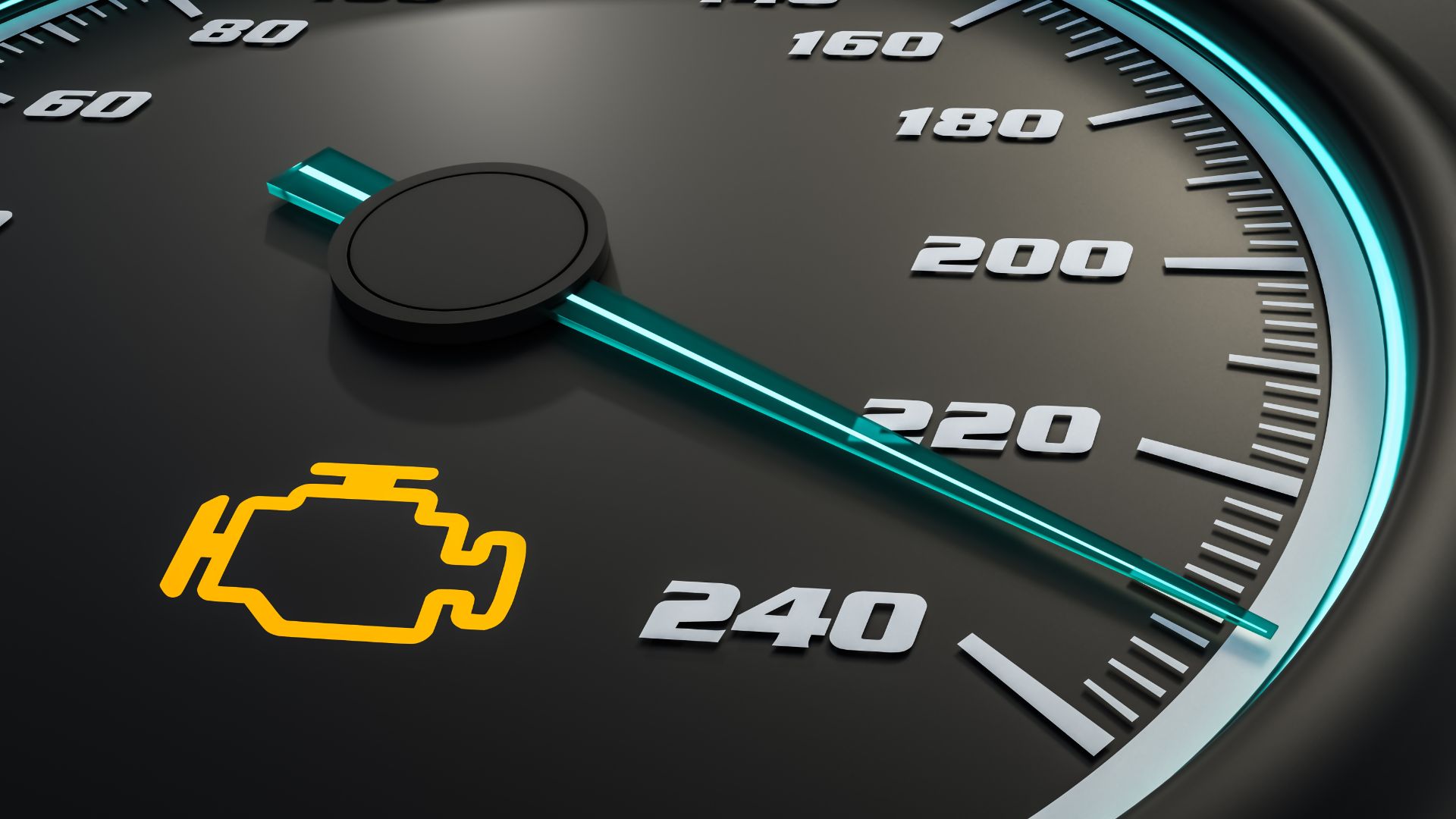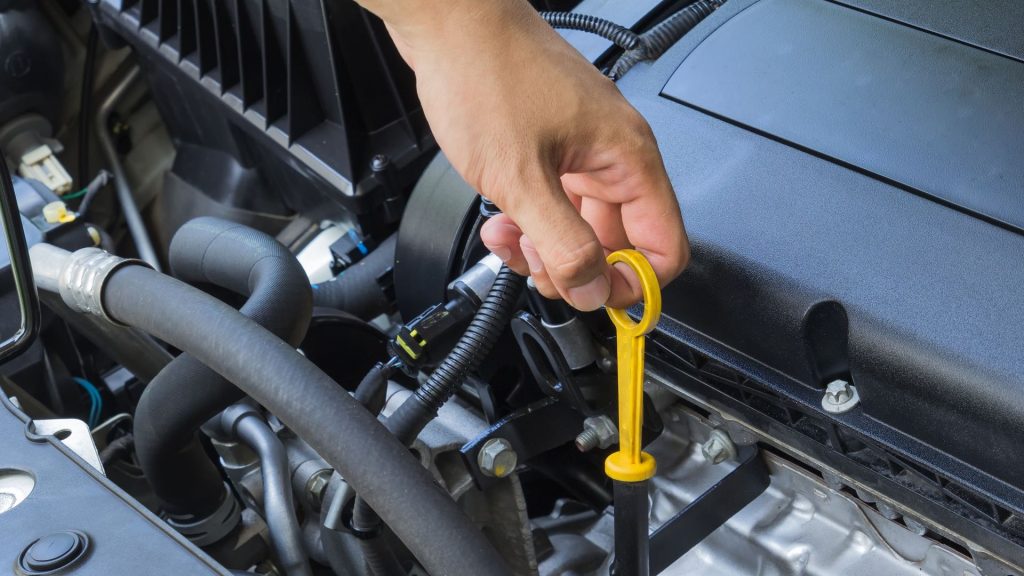Check engine light after oil change — causes and fixes
Investigate the check engine light coming on after an oil change.

It can be pretty startling to see the check engine light on the dashboard at any time, especially after you have performed an oil change. This issue can easily be fixed, so you do not have to panic when you notice it. The light may get illuminated due to engine misfiring or a loose fuse.
The check engine light appears on the dashboard when you ignite the engine, and it disappears if it finds no problem associated with the powerplant. It may occur after an oil change because the oil dipstick is not fully seated or the oil filler cap was put on backward.
Removing and replacing the oil filler cap adequately or reseating the oil dipstick will help fix the check engine light on after an oil change. In this article, we will explore the common reasons and fixes of a check engine light after an oil change.
Why do I notice the check engine light after an oil change?

A check engine light after an oil change appears when the oil filler cap is fitted backward or when the oil dipstick does not sit inside the tube. This issue can be easily fixed by seating the dipstick and placing the cap adequately. If the engine light does not disappear instantly, it should be after three engine cycles. Some of the reasons why the check engine light turns on after an oil change include the following;
Oil cap filter fitted backward
Fixing this issue isn’t strenuous work at all. It is crucial to understand the car’s running mechanism to know why this issue causes the check engine light to come on. Your vehicle’s engine control unit (ECU) ensures that the power plant gets an adequate air-to-fuel ratio. The ECU uses a sensor installed in the air intake system called the Mass Airflow Sensor, guaranteeing that the appropriate air volume enters the engine.
When the ECU calculates the quantity of air that enters the power plant, it understands how much gas it requires. The check engine light comes on when more oxygen enters the engine, and the ECU is unaware of it. When you put the oil cap filter backward, it forms a vacuum leak, giving the AFR mixture extra air.
The ECU notices the air in the mix and calculates the fuel supply and its appropriate use. It also analyzes the outcome with the previous calculation with the help of the oxygen sensor.
The dipstick is not fully seated
The dipstick is responsible for showing you the current engine oil level. During an oil change, the mechanic has to remove, clean, and put the dipstick in the tube several times.
The dipstick has to be seated and locked in fully. If it fails to be pushed adequately, some amount of air can seep into the engine. This unnecessary air is abnormal for the engine, and the ECU will notice it.
A fully seated dipstick is easily achievable, but we may let it loose when we are in a hurry. For a morning car maintenance routine, it is vital to check the dipstick before starting your trip. If you notice the check engine light turns on after inspecting the engine oil level, it could be due to the loose dipstick. You can quickly fix this issue by opening your hood, finding the dipstick, and pushing it entirely.
Too much oil
Excessive engine oil can cause the check engine light to come on, making you drive sluggishly. An overall oil level can cause engine misfiring, oil leaks, and smoke from the tailpipe and may cause your vehicle not to start. An excessive oil level is not as problematic as a low one, but it is still a sign of trouble for your car.
You can remedy too much oil by getting a suction pump to remove the extra oil. Open the hood and drain the oil from the dipstick tube or the oil entry spot. You can perform the suction through a mechanical pump or a manual operation.
Low oil pressure
The check engine light will not illuminate if the oil gets changed correctly. When oil is drained from the engine, it will automatically reset the oil pressure gauge.
Replacing the oil and installing a new filter will not give the gauge enough time to provide a proper reading. This can cause the check engine light to turn on because the car ‘thinks’ its oil levels are low. Leave the car to circulate the new oil throughout the engine before you can start driving.
Wrong oil
All vehicles must use a particular type of oil for their engine to perform adequately. If you use a different viscosity, grade, and weight of oil, it can cause trouble for your vehicle.
If oil is excessively viscous, it will not provide the same amount of lubrication, ensuring that heat is not transferred the way it should be. This causes the oil to heat up faster and makes the check engine light come on. Always use the correct oil in your car, and if you do not know that, you can check your owner’s manual for the appropriate oil and usage.
Faulty oxygen sensor
The oxygen sensor is an essential component that tracks how much fuel the vehicle’s engine burns. Usually, cars have either two or four oxygen sensors. If one of the sensors malfunctions, it can trigger the illumination of the check engine light.
A faulty oxygen sensor can significantly increase emissions and decrease the car’s fuel efficiency. If left unchecked, the faulty oxygen sensors can damage the catalytic converter. This can cost more than a thousand to replace it and about $250 on average to replace the oxygen sensors.
Faulty catalytic converter
The catalytic converter is one of the most vital components of the exhaust system. It converts carbon monoxide into harmless carbon dioxide before it passes out of the muffler tip.
It is crucial to maintain it adequately since as a bad catalytic converter is expensive to replace and can cause further damage to your vehicle. You can get a regular engine oil change and replace the spark plugs when necessary.
Malfunctioning mass airflow sensor
The MAS monitors the amount of air entering the engine. It helps the engine control unit to calculate how much fuel it needs to inject into the cylinders to ensure a good burn. If the mass airflow sensor malfunctions, it can cause the engine to stall.
One of the most common reasons the MAS would malfunction is a result of a blocked air filter. The air filter requires frequent cleaning. You should also replace the mass airflow sensor if it gets old; if not, it will prevent adequate air from entering the engine and cause the Mass airflow sensor to fail.
How to fix check engine light after an oil change

Check the dipstick
If you suspect the check engine light illuminates due to the dipstick sitting in the wrong position, you can carry out a simple fix. Just open up the car hood and inspect the dipstick.
If it is not sitting in the tube correctly, you can make the necessary adjustment to get it seated. You should also check inside the tube to ensure there isn’t debris stopping the dipstick from staying in place.
Check the oil filler cap
It is easy to put the oil filler cap in the wrong position or keep it off slightly. To fix this problem, check the cap and see how it is placed.
If it is put on backward or does not fit correctly, try repositioning it. You can also check your service manual to see if you can find the appropriate way to put on the oil filler cap if you are not sure.
Run the engine for a few minutes
If you are experiencing low oil pressure, you need a few minutes to resolve the issue. Run the engine for a few minutes to see if the system balances the pressure. As new oil circulates through the system, the check engine light turns off.
If it doesn’t, there should be a more extended problem occurring. If it is temporarily low oil pressure, you may need to inspect the check engine light with an OBD-II scanner, which may solve the check engine light issue.
Remove excessive oil
If the engine oil gets overfilled, the only thing you should do is drain some part of it. You can use a suction pump for this through the dipstick tube or use the cap access point. It is essential to research to determine if a manual or automatic pump will work better for you.
Our take
Whenever the check engine light turns on, it indicates something wrong in your vehicle. It could be something severe like an engine misfiring or something as minor as a loose gas cap.
Regardless, it is uncommon for the check engine light to come on after an oil change, but it is possible. It is crucial to take your vehicle to a mechanic when you notice your check engine light is illuminating to prevent potential car damage.
Why does check engine light come on after oil change?
Check engine light can come on after an oil change due to a backward-fitted oil cap filler, low oil pressure, excessive oil, faulty oxygen sensor, e.t.c.
How do I turn off the check engine light after an oil change?
You can achieve this by turning on the ignition while holding the reset button. Check the oil change light carefully, as it will start to blink. Allow the light to flash for a few seconds before releasing the reset button, then turn off the ignition.
Can too much oil cause check engine light?
Too much oil can cause the check engine to illuminate. It can also make you drive sluggishly and may lead to an oil leak and engine misfiring.